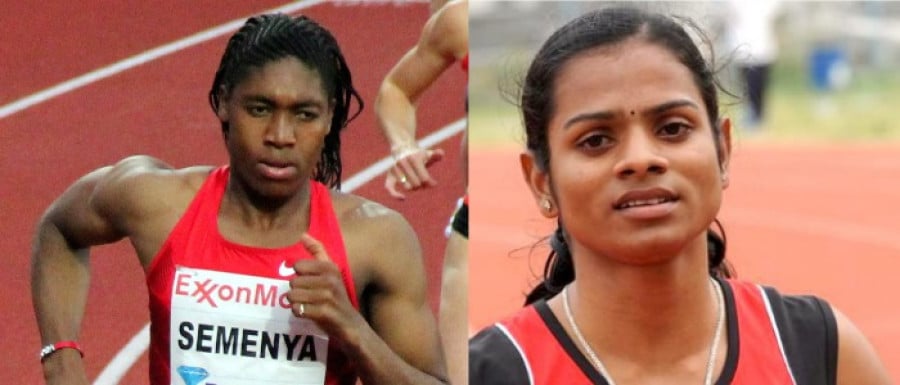Testosterone, sex and gender differentiation in sport – where science and sports law meet

In historical terms, modern, codified sport was invented in Britain by men, for men and thus in their own interests. Games therefore centred on Victorian notions of athletic manliness and associated ideals of masculinity. This involved physical and biological appearance (i.e. categorisations by sex) and sociocultural norms (i.e. categorisations by gender).
That process stratified sport, placing men at the core and women at the periphery of an emerging ‘cult of athleticism’. A ‘natural’ symbiosis seemed to exist between sport and manliness, while for women anything more than gentle exercise was roundly condemned as ‘unnatural’ for the female body and contrary to ideals of femininity.
The 20th century witnessed a sustained struggle for female participation, with the Olympic Games something of a litmus test for women’s rights in sport. Reflecting the wider constraints of a patriarchal society, women were often disallowed from competing in several sports, or constrained from taking part in particular events within them. This was especially so for contests involving endurance or strength, neither of which women – as a consequence of their ‘biology’ – were presumed to possess. The rule of thumb was that men were ‘naturally’ equipped to be athletic; women, by contrast, faced physical limitations by virtue of their sex.
Women were, however, extremely important to Olympic national teams; after all, a medal for a female athlete counted the same towards the medal tally as that for a male athlete. So, in very crude terms, even though women were too often trivialised as athletes of calibre, they very much counted on the patriotic scoreboard. Indeed, by the 1960s the performance of women at the Games was a hot topic. This stemmed from suspicions about the use of Androgenic Anabolic Steroids (AAS), a class of drug that could be used to help “masculinise” the athletic body, whether male or female, with assumptions thereof about improved athletic performance. As is now known, systematic doping was especially pronounced in several East European countries.12
While sport administrators were wrangling with the question of doping as an unfair advantage, they had a particular fear about the androgenising impact of AAS on women. This concern extended beyond mere biological considerations of how a changed physiology afforded sporting prowess; AAS was also likely to have implications for idealised conceptions of the female gender in sport. In that respect it seems telling that sex testing (1966) was introduced before drug testing (1968) in sport. It also showcased how biology (sex testing) was used as a front to support an underlying commitment to prevailing gender norms and associated inequities. In the case of high performance sport, women could be asked to ‘prove’ that they were female, while there was no requirement for men to do the same. By convention, men and women were almost always separated in athletic contests; this was underpinned by an assumption that male athletes had performance advantages over female athletes by virtue of sex-based physiological differences.
Gender and Sex
Gender identity is a combination of physiology and social influence. Based on current acceptance, gender identity is the sense one has of being either male or female. Whereas sex is narrowly biological, gender is a combination of physiology, psychology and socio-cultural factors. Discussions about sex and gender are therefore complex, resulting in highly charged and difficult debates.
If gender identity discussions confined to known phenotypes (observable biological sex characteristics) of male and female are complex, even greater confusion arises when the phenotype itself is in question. This is because the physical phenotype of an individual is the result of sex genes (chromosomes; genotype) as well as the hormonal effects of those genes during the person’s development. A series of biological events need to occur for that genotype to manifest into physical form to create the phenotypic sex we see. The long chain of biological steps from the genes to the person’s observable physicality has meant that a natural spectrum of biological (sex) variability exists.
Gender identity is therefore a complex and socially nuanced matter that exists on a biological continuum, which has long been retrofitted in the context of sport into a social binary that uses sex differences to separate men and women. Without expert knowledge of biological science, sports administrators have historically made naive assumptions10 about ‘normality’ both between and within the sexes.
Verification and Classification
The International Association of Athletics Federations (IAAF) was the first to introduce a ‘chromosomal verification’ test, followed by the International Olympic Committee (IOC) in 1968, at which point drug testing also began at the Olympics. The chromosome test was based on the assumption, subsequently shown to be flawed, that sex could always be determined by the biological information derived from a buccal smear (e.g. the Barr body sex test).
In the mid-1980s, Spanish hurdler Maria Martinez-Patino’s high-profile campaign for reinstatement after being disqualified for failing a Barr body test was used to pressure the IOC and other organisations into changing (or eliminating) their sex tests. Patino ‘failed’ the Barr body test only because of a medical condition; a condition that gave her no physiological sporting advantage.5 Her successful appeal was largely influenced by the fact that human rights activists and geneticists believed that the test was unfair and took up her cause as a test case through which they could make profound points about equality, scientific objectivity, and the complexity of human gender identity. Their main argument, then, was not that testing for sex was problematic in and of itself, but rather than this specific test, using chromosomes as a proxy for sporting ability, was inappropriate.5
In 1988 the IAAF dropped chromosomal and genetic testing in favour of a manual/visual ‘health check’ by the team doctor, but then abandoned all forms of systematic sex testing in 1991. The IAAF argued that these were no longer necessary because doping regulations required athletes to pass urine in front of witnesses, thereby allowing a de facto ‘check’ of genitalia. Moreover, modern sportswear was now so revealing that it seemed unfeasible that a man could masquerade as a woman.
The IOC was more resistant to change, instead introducing a genetic test in 1992 that identified a specific region of genetic code usually found on the Y chromosome, known as the ‘sex determining region Y’. Even this test continued to throw what, for the purposes of sex segregation, seem to have been false positives, for although at the Atlanta Olympics in 1996 eight women ‘failed’ this test, all were allowed to compete after further examinations were carried out.5 Finally, in 1999 the IOC agreed to follow the IAAF and remove the requirement for blanket sex testing, so that the 2000 Olympics in Sydney was the first Games in three decades where the genetic make-up of female athletes was not scrutinised.6, 9
Of course, as we have seen recently in the case of Caster Semenya,11 if the gender of a female athlete is actually challenged, she can still be required to undergo a full gamut of tests: physical, physiological, genetic, hormonal, psychological. More generally, too, and notwithstanding the ‘end’ of sex testing, sports administrators soon turned to another biological variable – testosterone, a substance that men typically have in greater volumes than women, and whose presence is widely assumed to translate into performance capabilities in terms of strength, speed and endurance.
To continue reading or watching login or register here
Already a member? Sign in
Get access to all of the expert analysis and commentary at LawInSport including articles, webinars, conference videos and podcast transcripts. Find out more here.
Related Articles
- AIBA limits Boxing India’s coaches at Games while athlete ruled ineligible due to hyperandrogenism
- SAI advises Chand to take hyperandrogenism case to CAS
- Sports Authority of India prepares to argue Chand’s hyperandrogenism case to IAAF
Written by
Dr Ben Koh
Dr Ben Koh is a medical doctor with a Masters in Sports Medicine and a Masters in Psychology and has clinical and educational training in surgery, sports medicine, emergency medicine and critical care.
Peter Sonksen OBE
Peter Sonksen OBE MD FRCP FFSEM (UK) is a 78-year-old retired Professor of Endocrinology from St Thomas’ Hospital and King’s College, London and a Visiting Professor at Southampton University. He was recently awarded an OBE for his contribution to the fight against doping in sport.
Daryl Adair
Daryl Adair is a historian and Associate Professor of Sport Management at UTS Business School, University of Technology Sydney, Australia. His recent research focuses on policy challenges in sport, such as integrity processes and the politics of elite participation.





